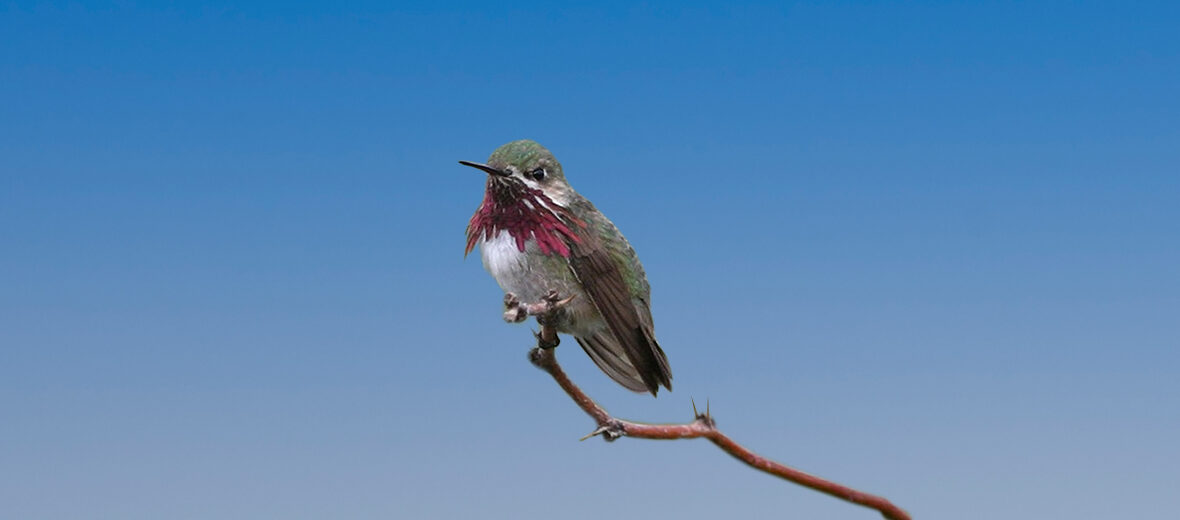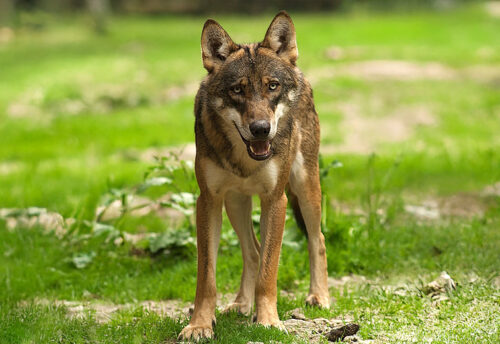
The Calliope hummingbird is the smallest known species of migrant hummingbird native to Canada and the United States. These little critters migrate upwards of 5,600 miles each year from North America to Mexico! Quite an impressive feat for such a small bird. With no major threats to their survival, sans habitat loss and destruction, and accidental poisoning, these little birds are listed as Least Concern by the IUCN. Their population trend is also listed as increasing.
First the Stats…
Scientific name: Selasphorus calliope
Weight: Up to .106 ounce
Length: Up to 3.9 inches
Wingspan: Up to 4.3 inches
Lifespan: Up to 6+ years
Now on to the Facts!
1.) They migrate up to twice a year, following blooming wildflower meadows.
2.) These hummingbirds were named after the Greek muse Calliope.
3.) Not only are they the smallest migrant bird, but they are the smallest bird species in North America. They’re also considered the smallest migrant bird in the world.
4.) Calliope hummingbirds can be found at elevations of up to 11,000 feet.
5.) The preferred habitats are those that consist of open montane forests, mountain meadows, and willow & alder thickets.
But wait, there’s more on the Calliope hummingbird!
6.) They also tolerate chaparrals, lowland brushy regions, deserts, and semi-desert regions.
7.) Like other hummingbirds, they feast primarily on nectar from flowers, as well as insects caught on the wing (in mid flight).
Did you know…?
There are an estimated 4,500,000 individuals, to date.
8.) Preferred plants for pollinating include: columbine, elephant head, paintbrush, penstemon, and trumpet gilia.
9.) Females construct an open cup nest and lay up to 2 eggs that hatch in up to 16 days.
10.) Chicks can fly in up to 20 days after hatching.
But wait, there’s still more on the Calliope hummingbird!
11.) The telltale humming sound they make is derived from their rapid wingbeats while feeding or interacting with other hummingbirds.
12.) The humming sound is produced from aerodynamic forces generated by both the downstrokes and upstrokes of their rapid wingbeats, producing acoustic oscillations as well as harmonics.
Did you know…?
All hummingbirds dissipate heat in part by exhaled air, and also from body structures with thinned or zero feather covering, like around the eyes, shoulders, under the wings, and their feet.
13.) During courtship, the male hovers at an accelerated wingbeat frequency of up to 95 flaps per second (which is 42% higher than normal hovering), creating a loud buzzing sound, with their throat feathers protruding and facing the female.
14.) While lacking many predators, their main threat is that of climate change and subsequent cold snaps that can cause a drop in ambient temperatures.
15.) They may be small, but they can be aggressive towards birds that are much larger than themselves, like American robins and red-tailed hawks.
Now a Short Calliope Hummingbird Video!
Be sure to share & comment below! Also, check out the Critter Science YouTube channel. Videos added regularly!

Want to suggest a critter for me to write about? Let me know here.
Some source material acquired from: Wikipedia & IUCN



